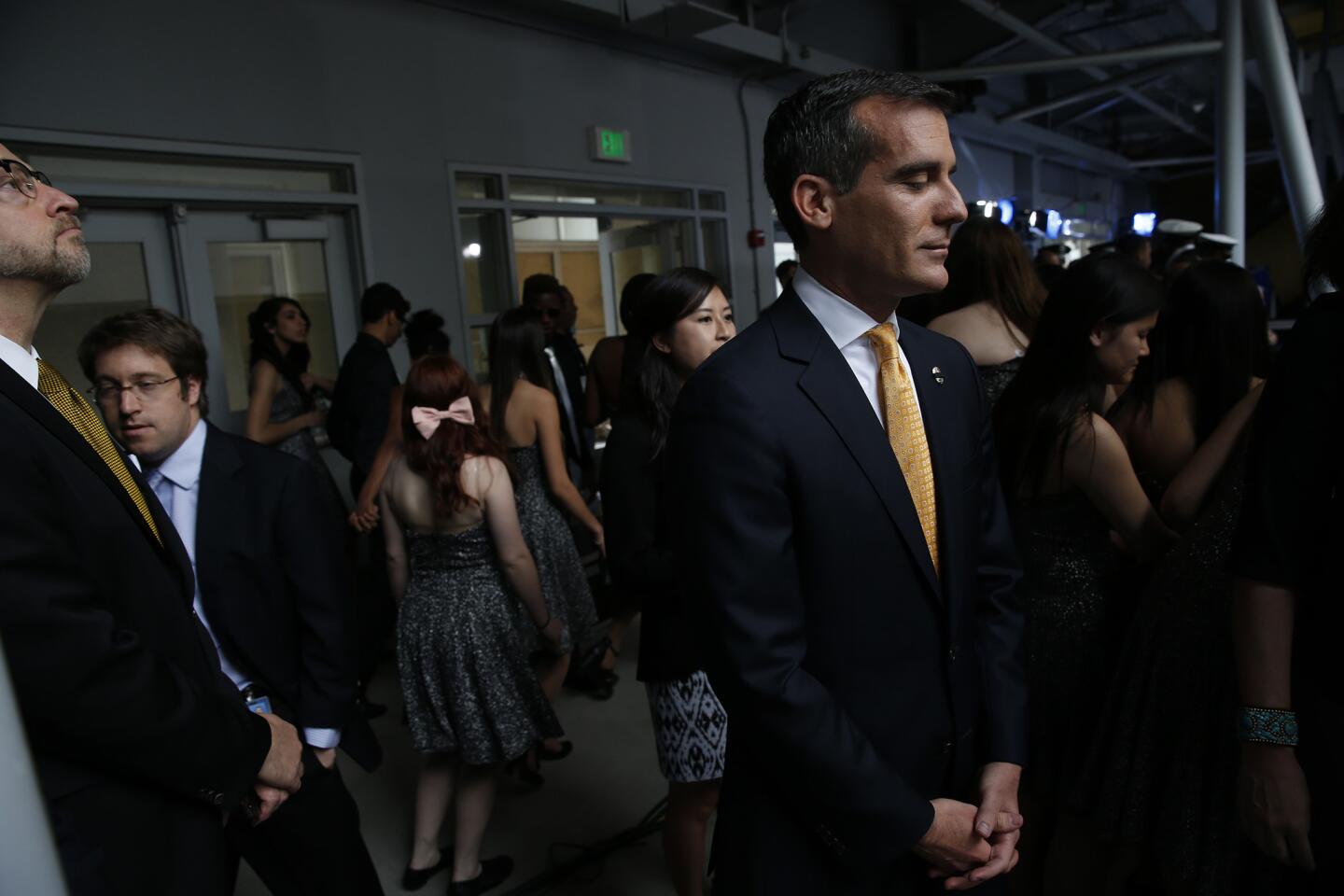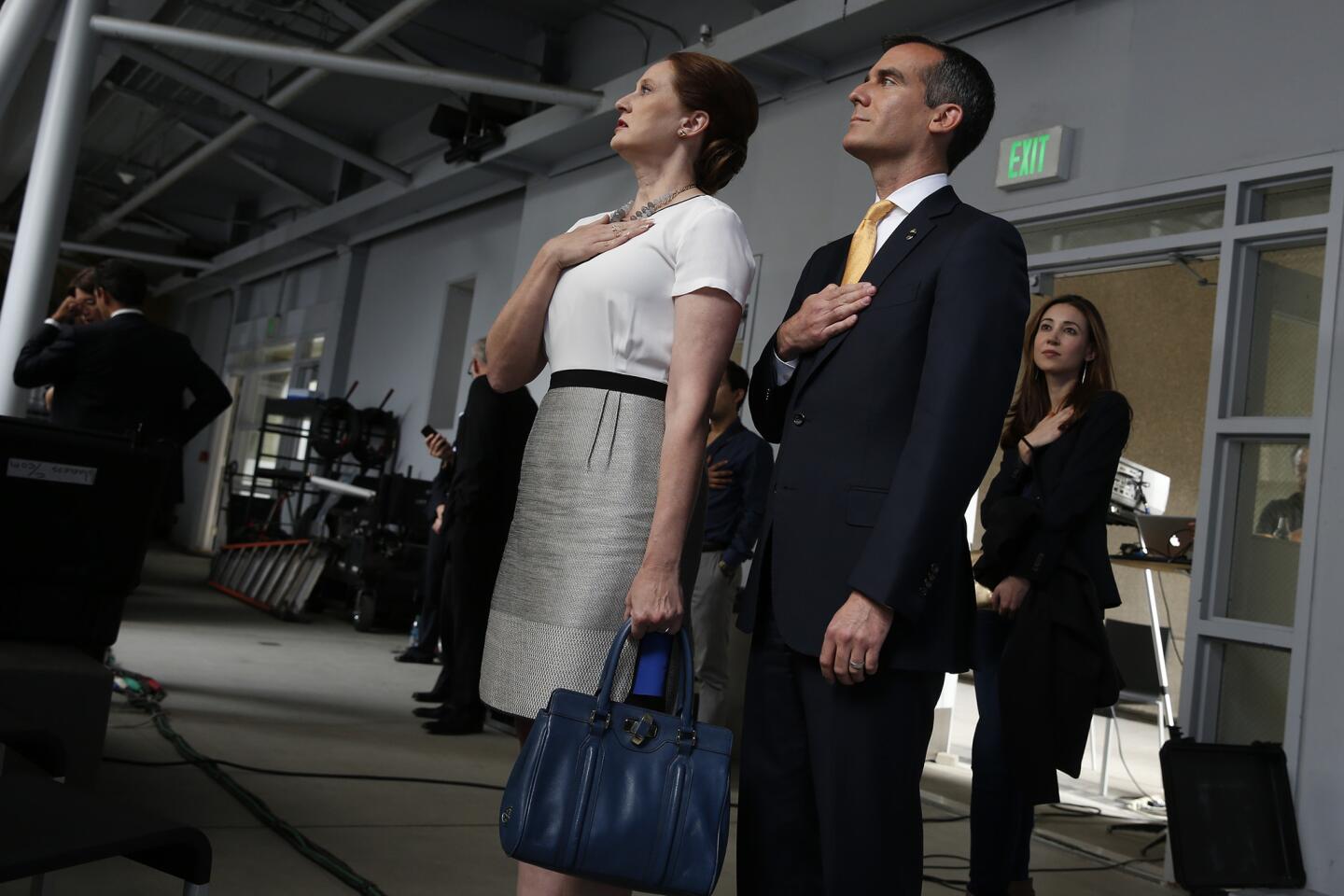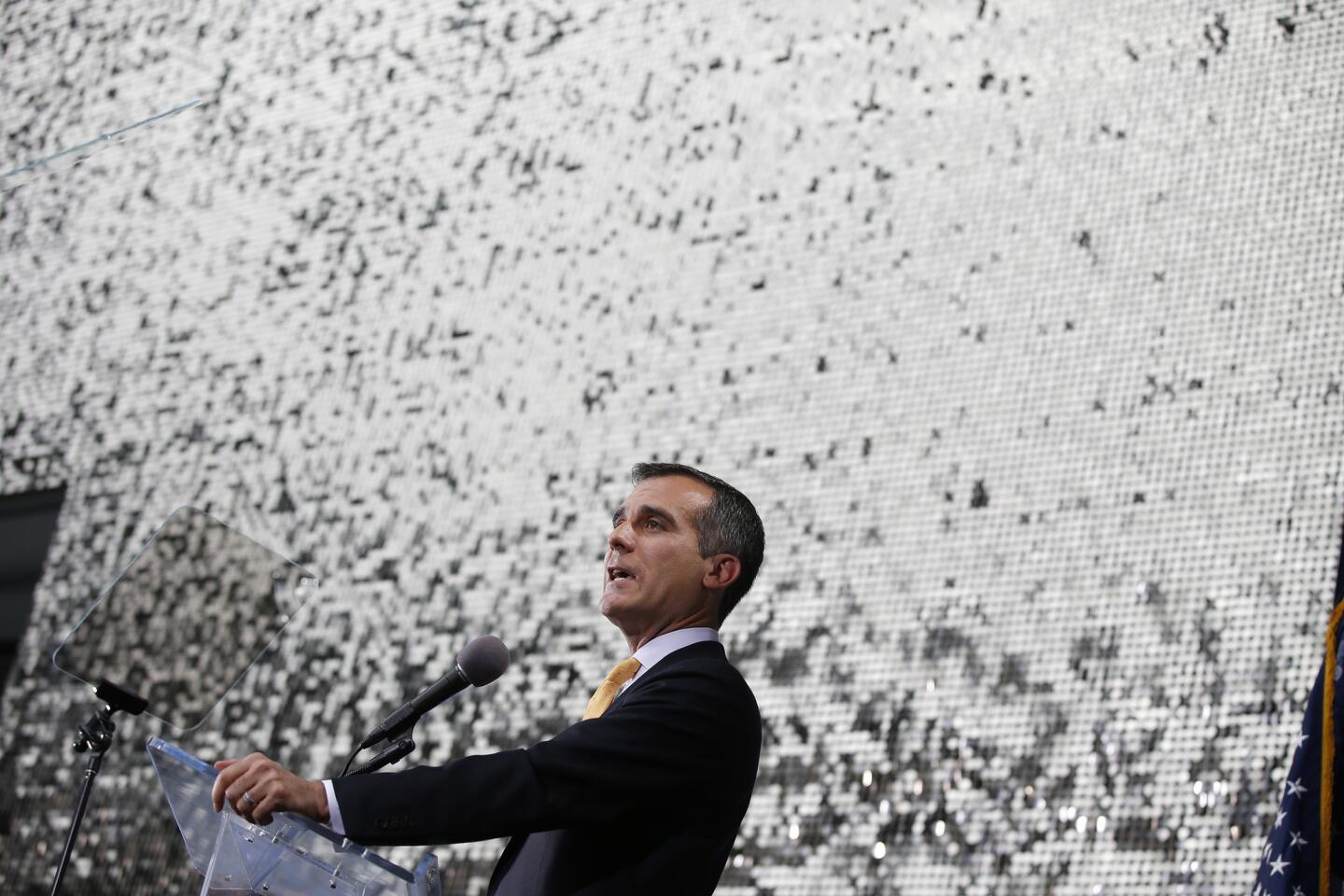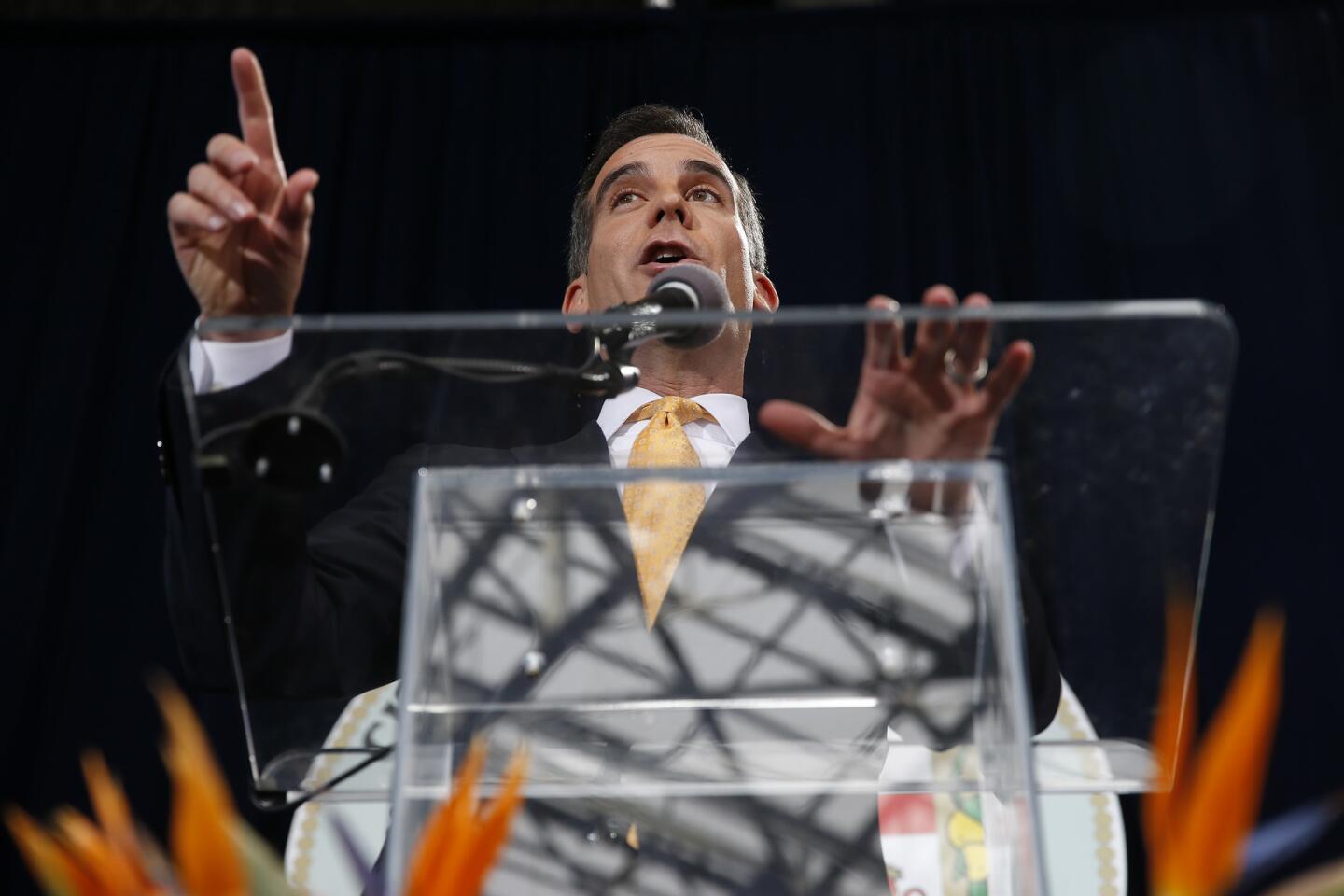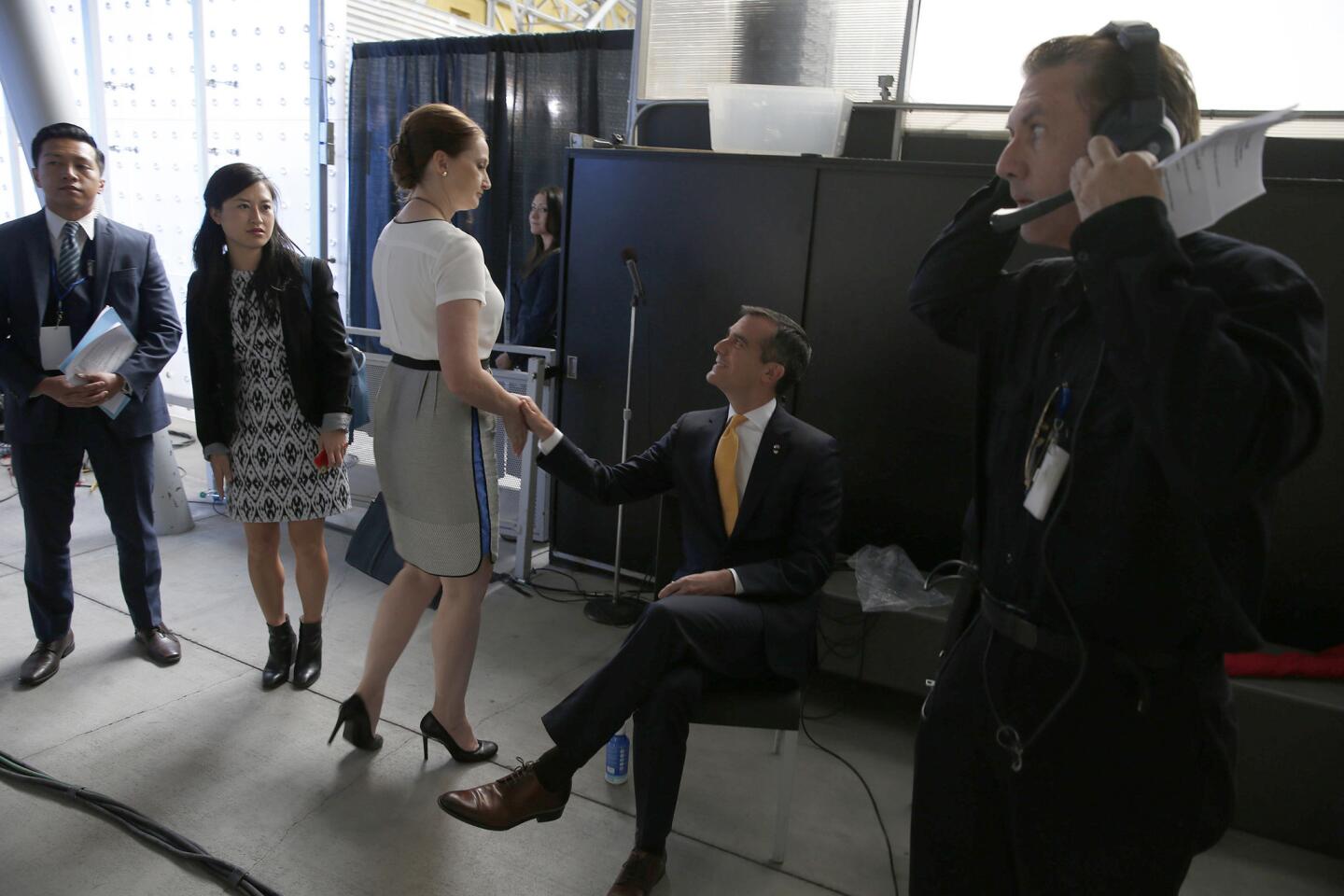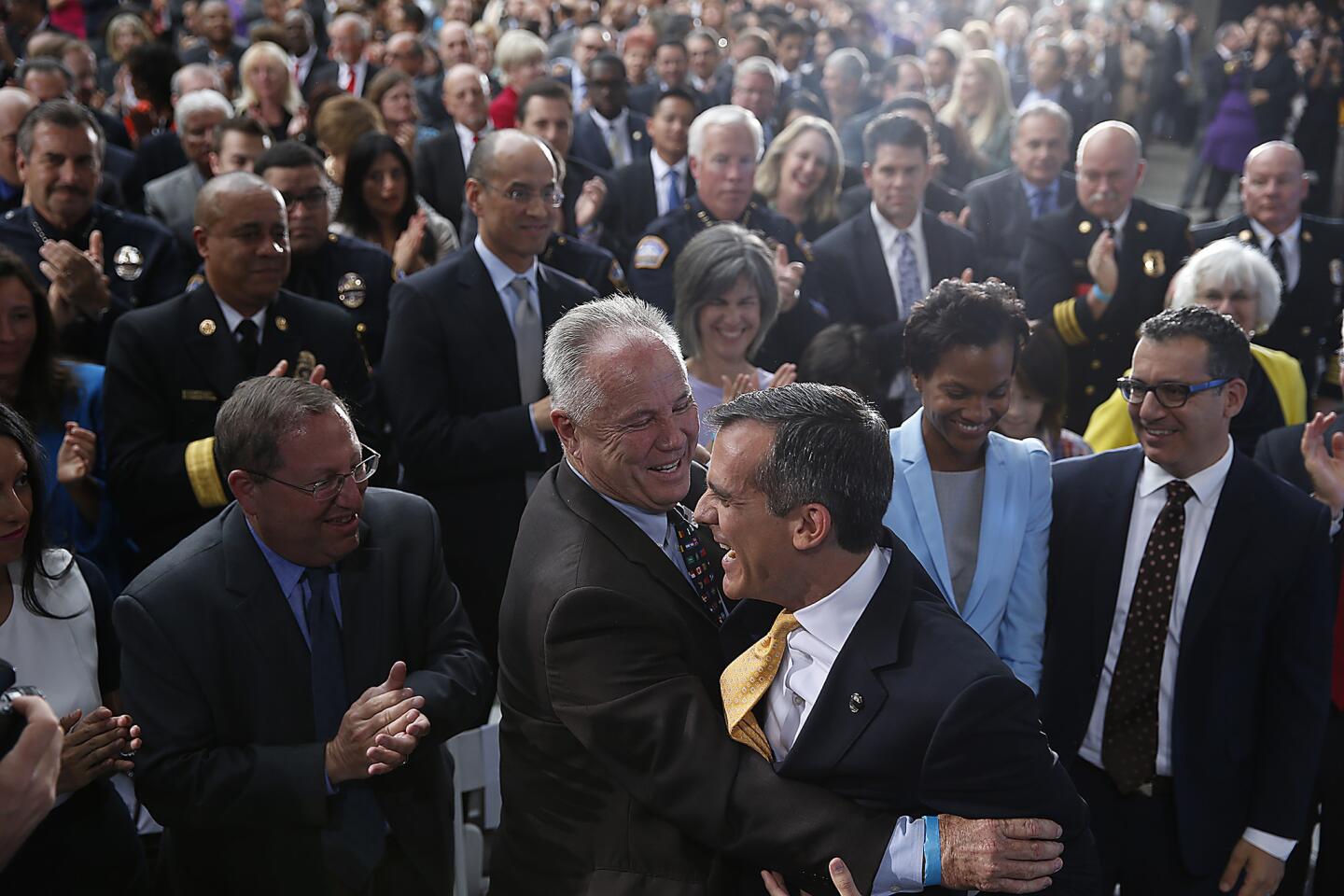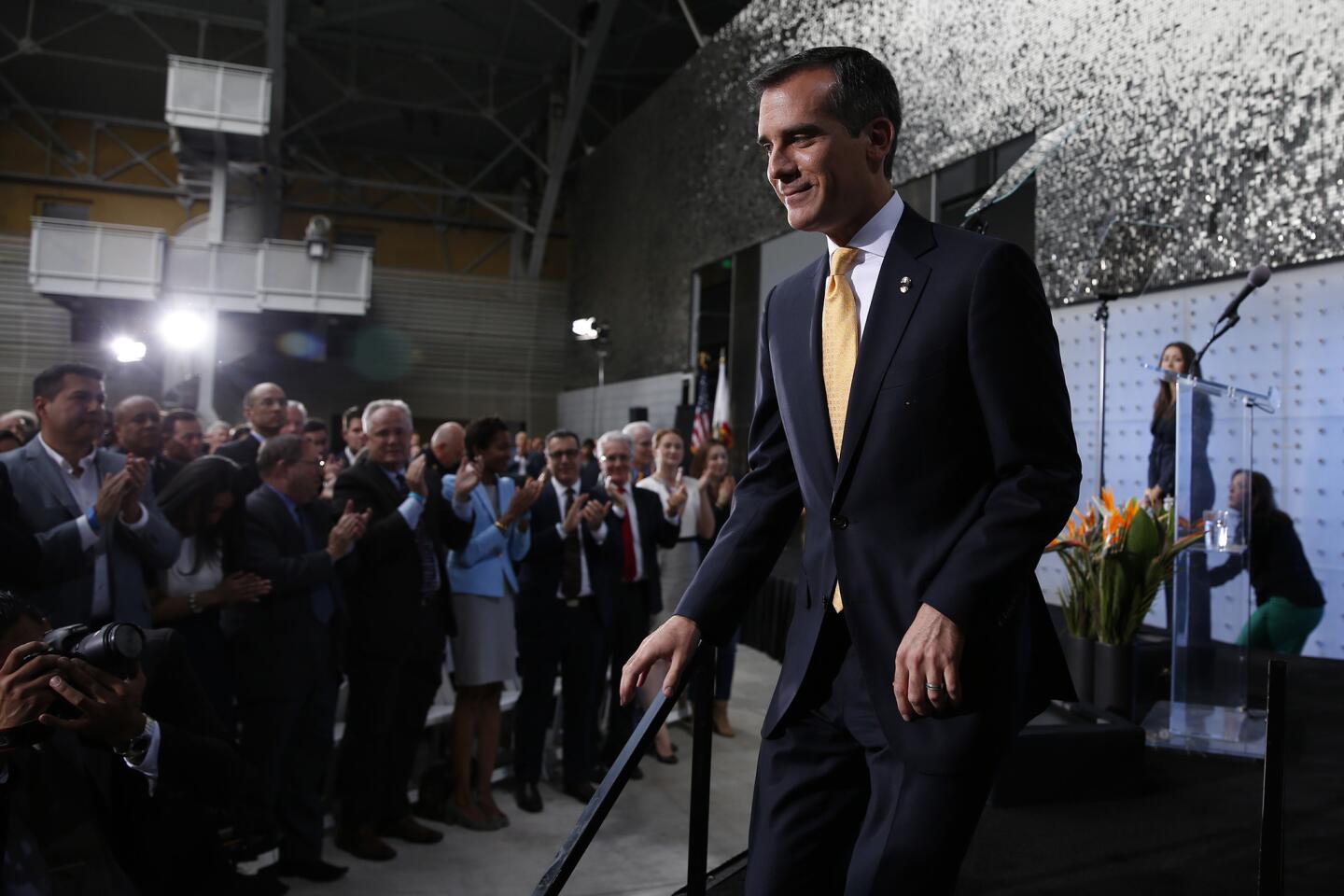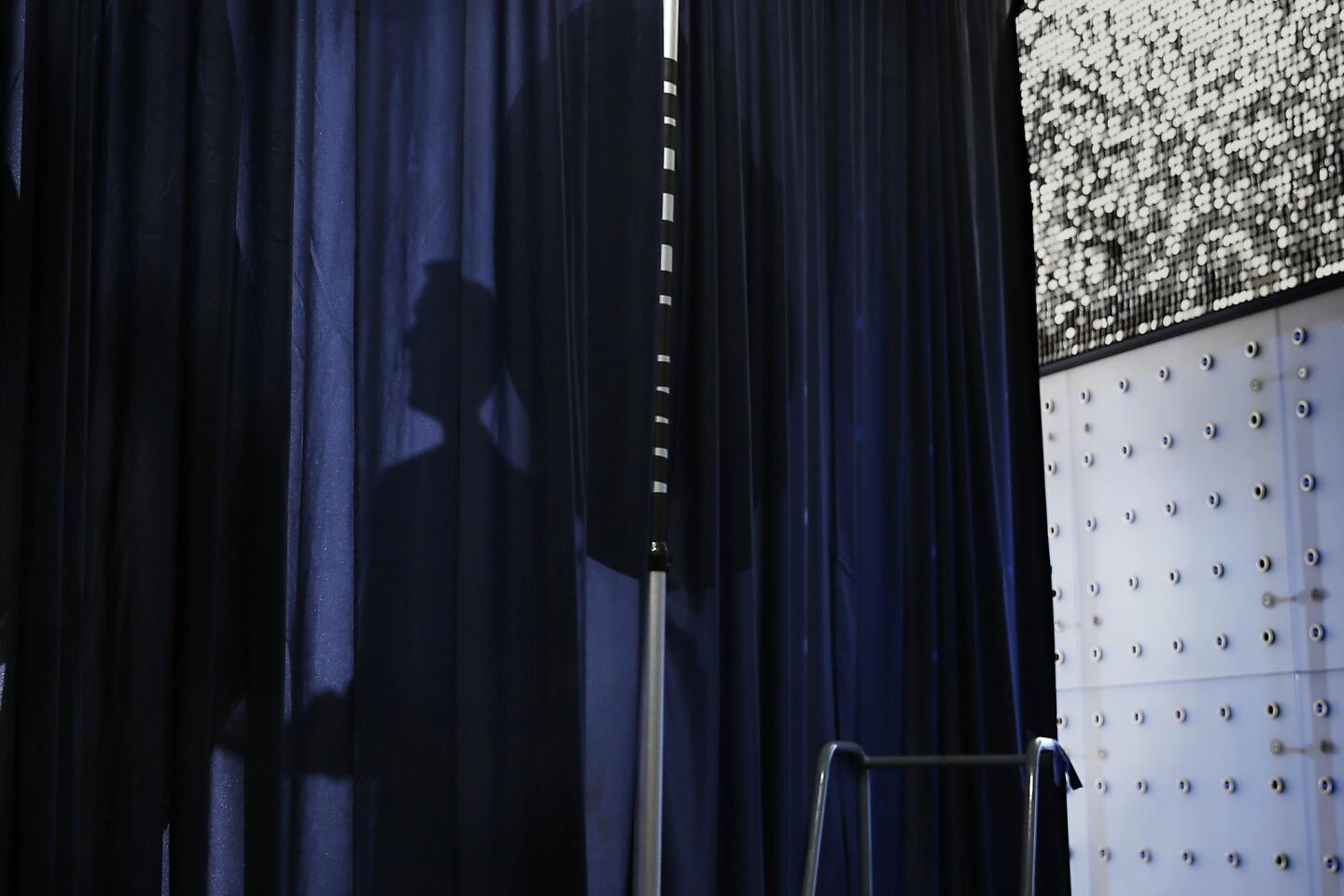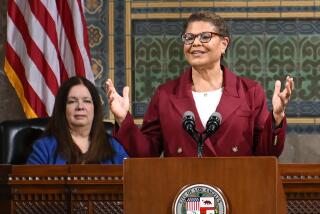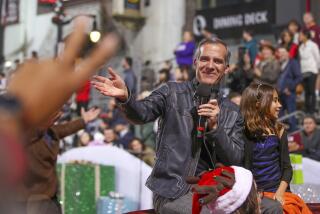Garcetti shares ‘back to basics’ agenda in State of the City address
Los Angeles Mayor Eric Garcetti presented a long and eclectic list of initiatives in his first State of the City address Thursday, promising to reinvigorate the city’s major boulevards, cut taxes for businesses, put building records online and keep a lid on rates at the Department of Water and Power.
Speaking at the California Science Center in South Los Angeles, Garcetti spelled out in detail his “back to basics” agenda, which focuses on public safety, economic prosperity, quality of life and a well-run city government. He did not always provide timetables to help the public measure his progress, opting for overarching themes.
Echoing a theme since he won election last May, Garcetti used the 32-minute speech to highlight his emphasis on problem solving, not publicity. He promised to install tracking devices in fire department vehicles to enhance 911 responses, improve service at the DWP and streamline city permitting.
“We’re about getting results, not about getting headlines,” he said.
Garcetti heralded the city’s accomplishments, including a drop in crime, new construction projects and television shoots in Los Angeles. He made no mention of homelessness or a tax hike proposed for street repairs. And he did not bring up proposals from the LA 2020 Commission, a citizen panel that has offered a far darker outlook on the city’s economy and its government.
On the eve of Garcetti’s speech, the panel offered a critique of City Hall and an array of recommendations, ranging from switching the date of the city’s election to boost voter turnout to merging the ports of Los Angeles and Long Beach, a move billed as a way to increase economic competitiveness.
Austin Beutner, the commission’s co-chairman and a former mayoral candidate himself, said he did not watch the speech and had no comment. Garcetti, in what some on social media took as a jab at the panel, said in his speech the city needs “fundamental work” but not “a new diagnosis.”
Garcetti staged the ceremony in a location that allowed him to recall some of the city’s biggest accomplishments, such as the staging of the 1984 Summer Olympics at the adjacent Coliseum and the engineering of the space shuttles, one of which, the Endeavour, is on display in the complex. Los Angeles is still doing big things, he said, including rebuilding downtown’s Wilshire Grand Hotel and upgrading terminals at Los Angeles International Airport.
On the whole, the speech focused more on improving city operations than on sweeping, costly initiatives of the type laid out by his predecessors. In 2002, former Mayor James Hahn’s first State of the City speech focused heavily on two major goals: keeping the San Fernando Valley from becoming its own city and finding a way to hire 1,000 new police officers.
Hahn prevailed on the first but fell far short on the second. Four years later, Antonio Villaraigosa used his first citywide address to announce his own plan for hiring 1,000 officers and taking over the Los Angles Unified School District. Although he managed to add around 800 officers, the school takeover was thrown out by a judge.
Garcetti’s push for smaller-scale improvements in service didn’t trouble Sherman Oaks resident Frankie Contreras, who attended Thursday’s speech. “In order for you to build a better city, you better pay attention to the little things,” he said.
Carol Schatz, chief executive of the downtown-based Central City Assn., agreed. “He was very clear about making City Hall work. And when you do that, you encourage investment,” she said.
To highlight his interest in greater city efficiency and innovation, Garcetti singled out Paul Jewett, an employee at the Department of Recreation and Parks who found new ways to reduce energy use at city gyms when not in use. After the speech, Jewett said cutting back on air conditioning made his job easier by reducing the need for maintenance on cooling units.
Garcetti stressed the need to upgrade technology to improve services — a point unintentionally highlighted when links to online streaming of the speech, promoted by his office, didn’t work. Aides said they didn’t know what went wrong.
Garcetti must erase a $242-million projected deficit in the budget he will present to the City Council next week. And the city’s top budget official has warned that a new tax hike is “the only way” Los Angeles can raise the money to repair thousands of miles of badly damaged streets.
With little money for new programs, Garcetti offered fresh details on a Great Streets initiative, which directs existing funds to 15 boulevards. Among streets announced Thursday were Reseda Boulevard in the San Fernando Valley, Crenshaw Boulevard in South Los Angeles and Gaffey Street in San Pedro.
Garcetti also assured ratepayers that the DWP, which has struggled with a billing system that charged customers inaccurately, would not seek higher rates for the remainder of the year. “We can’t ask you to pay more for your water and power when the DWP screws up your bill,” he said.
He said construction of a new carpool lane on the 405 Freeway, which has exasperated drivers on the Westside, would be finished in May, not October.
The mayor announced he would launch a major effort to rate the earthquake safety of buildings and begin the phaseout of the city’s business tax, reducing the top rate over a three-year period. Garcetti did not specify how much that would cost the city’s budget or how it would work. The mayor also promised to send light rail to LAX, but he did not say when.
Garcetti said he was committed to a new era of collaboration with other L.A. elected officials and the county’s other 87 cities. “We’ve thrown out the old City Hall playbook of rivalry and back stabbing,” he said.
Cynthia Porter, who works for the federal Immigration and Customs Enforcement agency, said she was pleased to hear Garcetti hold the line on DWP rate increases this year. She said she was optimistic that Garcetti would succeed at improving government operations.
“Let’s see what he can do,” she said. “The city’s broken. It’s not going to happen overnight.”
soumya.karlamangla@latimes.com
More to Read
Sign up for Essential California
The most important California stories and recommendations in your inbox every morning.
You may occasionally receive promotional content from the Los Angeles Times.
